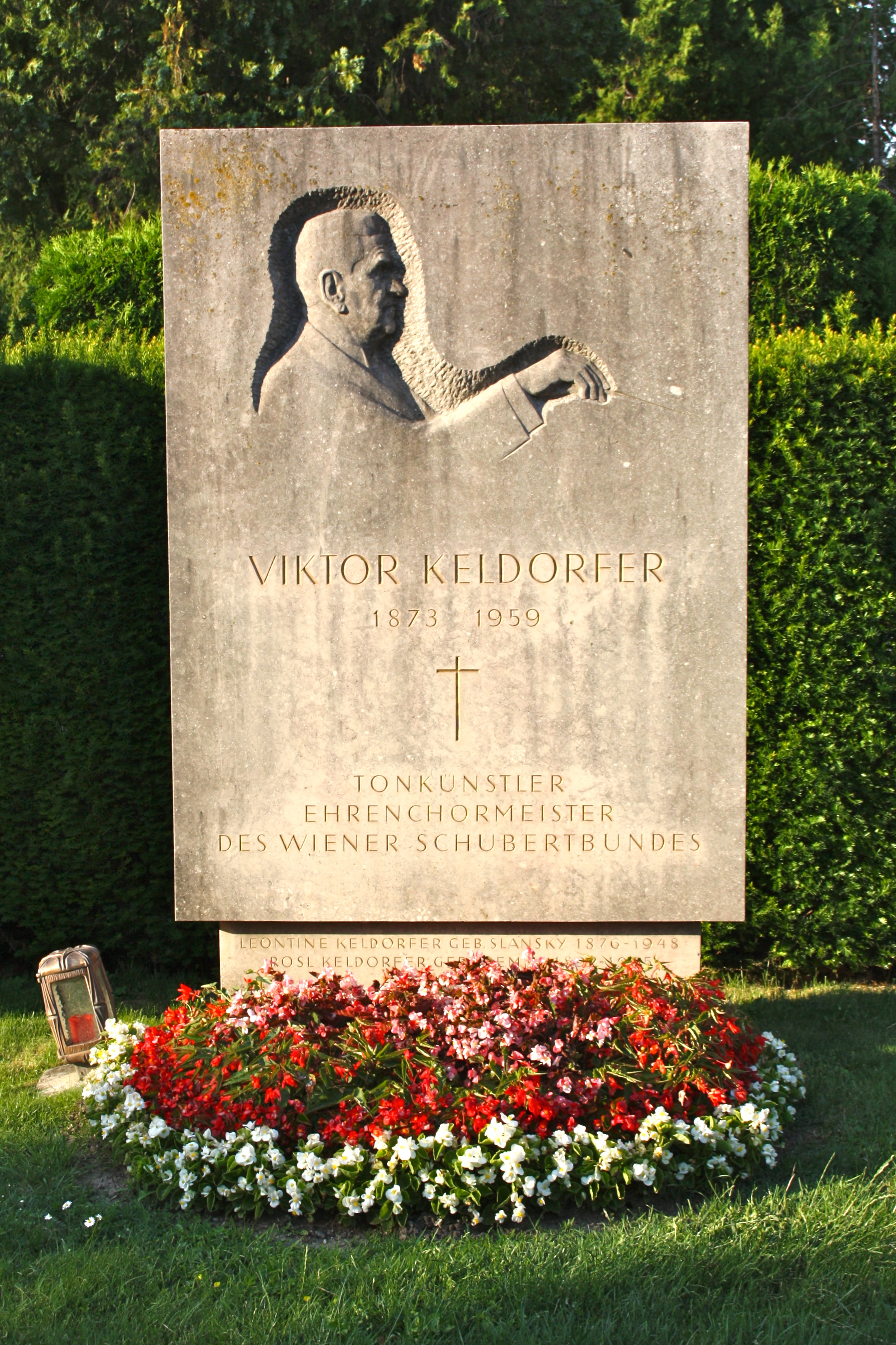|
Um Mitternacht, WAB 90
(At midnight), WAB 90, is a song composed by Anton Bruckner in 1886 on a text of Robert Prutz. About twenty years earlier Bruckner had already composed a song on the same text. History Bruckner composed the song on a text of Robert Prutz on 11 February 1886, for the (Men's singing association of Strasbourg). The piece was performed on 15 April 1886 by the Liedertafel ''Frohsinn'' in the . Because of performance difficulties ( humming voices and many modulations), the choir was enhanced by a harp.U. Harten, pp. 454-455C. van Zwol, p. 729 The work, of which the original manuscript is stored in the '' Österreichische Nationalbibliothek'', was issued in the same year by the '' Strassburger Sängerhaus'', and thereafter (1911) by Viktor Keldorfer (Universal Edition), together with the other setting ( ''Um Mitternacht'', WAB 89) and the other "midnight-song" ''Mitternacht'', WAB 80. It is issued in Band XXIII/2, No. 33 of the . Music The song is using the text by Robert ... [...More Info...] [...Related Items...] OR: [Wikipedia] [Google] [Baidu] |
Weltliche Chorwerke (Bruckner)
Throughout almost all his composing life, Anton Bruckner composed about thirty (secular choral works) and seven (mottoes) on German-language texts, the first in 1843 and the last in 1893. Many of these works including the mottoes, often with a patriotic slant, were written for ''Liedertafel'' (men's choral societies), above all ''Frohsinn'' and ''Sängerbund''. Others were composed for private occasions, such as weddings, funerals, birthdays or name-days, being dedicated to friends and acquaintances of the composer. The large majority of these works are set for men's choir, sometimes with soloists. Only two choral works (WAB 64 and WAB 66) and one motto (WAB 95.1) are set for mixed choir. Kronstorf * ''An dem Feste'', WAB 59a, a 20- bar long work, with 5 strophes, in D-flat major for men's choir composed on 19 September 1843 on a text by Alois Knauer. Around his life-end (1893), Bruckner reissued this first as ''Tafellied'', WAB 59c. Sankt Florian * ''Das Lied vom deutsc ... [...More Info...] [...Related Items...] OR: [Wikipedia] [Google] [Baidu] |
Österreichische Nationalbibliothek
The Austrian National Library (german: Österreichische Nationalbibliothek) is the largest library in Austria, with more than 12 million items in its various collections. The library is located in the Neue Burg Wing of the Hofburg in center of Vienna. Since 2005, some of the collections have been relocated within the Baroque structure of the Palais Mollard-Clary. Founded by the Habsburgs, the library was originally called the Imperial Court Library (german: Kaiserliche Hofbibliothek); the change to the current name occurred in 1920, following the end of the Habsburg Monarchy and the proclamation of the Austrian Republic. The library complex includes four museums, as well as multiple special collections and archives. Middle Ages The institution has its origin in the imperial library of the Middle Ages. During the Medieval period, the Austrian Duke Albert III (1349–1395) moved the books of the Viennese vaults into a library. Albert also arranged for important works from Latin ... [...More Info...] [...Related Items...] OR: [Wikipedia] [Google] [Baidu] |
Uwe Harten
Uwe Harten (born 16 August 1944) is a German musicologist, who works in Austria. Life Born in , Harten grew up in Hamburg, where he was a boy soprano at the Staatsoper. He took over the roles of a child. In Hamburg he also began his studies of musicology and art history, which he continued in Vienna with Erich Schenk. He gained his doctorate with his study of the Viennese Schumann admirer Carl Debrois van Bruyck. He then worked as a dramaturgical assistant at the Vienna Chamber Opera. Furthermore, he assisted Anthony van Hoboken in the production of his Werkverzeichnis of Joseph Haydn. Since 1972 he has been a member of the at the Österreichische Akademie der Wissenschaften. Since 1974 he has been secretary and member of the board of directors of the Denkmäler der Tonkunst in Österreich. In addition Harten worked as an assistant at the since its foundation in 1978. From 1988 to 2000 he was also its deputy scientific director and participated between 1977 and 2000 in ... [...More Info...] [...Related Items...] OR: [Wikipedia] [Google] [Baidu] |
Herbert Lippert
Herbert Lippert (born 7 October 1957) is an Austrian operatic tenor. Life Born in Linz, Lippert was a soloist with the Vienna Boys' Choir, studied music teaching at the University of Vienna and graduated with distinction. As a member of the ensemble of the Vienna State Opera he has specialised as a Mozart singer. He has worked with Sir Georg Solti and Wolfgang Sawallisch, under whose direction numerous recordings such as Haydn's ''Die Schöpfung'', Mozart's ''Don Giovanni'' and Wagner's ''Die Meistersinger von Nürnberg'' were made. Lippert worked several times with the conductors Nikolaus Harnoncourt, Franz Welser-Möst, Riccardo Muti and Fabio Luisi. In 2009/10 he made recordings and gave concerts with Harnoncourt and the Concentus Musicus Wien, with Luisi and the Sächsische Staatskapelle Dresden, with Franz Welser-Möst and the Wiener Philharmoniker, as well as opera appearances at the Vienna Volksoper and at the Graz Opera. In June 2014, he performed at the Vienna State ... [...More Info...] [...Related Items...] OR: [Wikipedia] [Google] [Baidu] |
Chorus Viennensis
Chorus Viennensis is a male choir associated with the Vienna Boys Choir. It was founded in 1952. The choir has won the Grand Prix du Disque Grand may refer to: People with the name * Grand (surname) * Grand L. Bush (born 1955), American actor * Grand Mixer DXT, American turntablist * Grand Puba (born 1966), American rapper Places * Grand, Oklahoma * Grand, Vosges, village and co ..., the Mozart Interpretation Prize and the Schubert Interpretation prize. References 1952 establishments in Austria Austrian choirs {{Austria-band-stub ... [...More Info...] [...Related Items...] OR: [Wikipedia] [Google] [Baidu] |
Guido Mancusi
Guido Mancusi (born 14 June 1966) is an Austrian-Italian conductor and composer. Life Born in Portici near Naples, Mancusi was the son of the Neapolitan conductor Enrico Mancusi and the Viennese singing teacher Ines Mancusi and grew up in Naples and Padova. He received his first piano lessons from his father, who was a close friend of the composer Nino Rota. After his father's early death, his mother decided to return to her hometown of Vienna with her two children. Mancusi became boy soprano with the Vienna Boys' Choir. After the Matura at the , he began studies in bassoon and singing at the Konservatorium der Stadt Wien. During his school years he became a member of the Catholic secondary school fraternity K. Ö. St. V. Frankonia zu Wien, to which he still belongs today. Studies followed at the Vienna Academy of Music in composition with Erich Urbanner and conducting with Karl Österreicher, he received diplomas with distinction. In 1992 he became ''magister artium'' with a the ... [...More Info...] [...Related Items...] OR: [Wikipedia] [Google] [Baidu] |
Bar (music)
In musical notation, a bar (or measure) is a segment of time corresponding to a specific number of beats in which each beat is represented by a particular note value and the boundaries of the bar are indicated by vertical bar lines. Dividing music into bars provides regular reference points to pinpoint locations within a musical composition. It also makes written music easier to follow, since each bar of staff symbols can be read and played as a batch. Typically, a piece consists of several bars of the same length, and in modern musical notation the number of beats in each bar is specified at the beginning of the score by the time signature. In simple time, (such as ), the top figure indicates the number of beats per bar, while the bottom number indicates the note value of the beat (the beat has a quarter note value in the example). The word ''bar'' is more common in British English, and the word ''measure'' is more common in American English, although musicians generally u ... [...More Info...] [...Related Items...] OR: [Wikipedia] [Google] [Baidu] |
Mitternacht, WAB 80
' (Midnight), WAB 80, is a song composed by Anton Bruckner in 1869. History Bruckner composed the song on a text of Joseph Mendelssohn in November 1869, for the 25th anniversary of Linz Liedertafel ''Frohsinn''. The piece was performed on 15 May 1870 by ''Frohsinn'' in the ' in Linz.C. van Zwol, p. 726U. Harten, p. 289C. Howie, Chapter III, p.81 The work, of which the original manuscript is stored in the archive of Liedertafel ''Frohsinn'', was first issued by Doblinger in 1903. It was reissued in 1911 by Viktor Keldorfer (Universal Edition), together with the two other Bruckner's "midnight-songs" (''Um Mitternacht'', WAB 89 and WAB 90). The song is issued in Band XXIII/2, No. 25 of the '. Text ''Mitternacht'' uses a text by Joseph Mendelssohn. Music The 84-bar long work in A-flat major is scored for choir, tenor soloist and piano. Strophe 1 is sung by the choir with an ostinato of the piano. In strophe 2, bars 49-58 ('), the soloist is singing with accompanimen ... [...More Info...] [...Related Items...] OR: [Wikipedia] [Google] [Baidu] |
Universal Edition
Universal Edition (UE) is a classical music publishing firm. Founded in 1901 in Vienna, they originally intended to provide the core classical works and educational works to the Austrian market (which had until then been dominated by Leipzig-based publishers). The firm soon expanded to become one of the most important publishers of modern music. History In 1904, UE acquired Aibl publishers, and so acquired the rights to works by Richard Strauss, Max Reger, and other composers, but it was the arrival of Emil Hertzka as managing director in 1907 (who remained until his death in 1932) which really pushed the firm towards new music. Under Hertzka, UE signed contracts with a number of important contemporary composers, including Béla Bartók and Frederick Delius in 1908; Gustav Mahler and Arnold Schoenberg in 1909 (Mahler's '' Symphony No. 8'' was the first work UE acquired an original copyright to); Anton Webern and Alexander von Zemlinsky in 1910; Karol Szymanowski in 1912; Leoš J ... [...More Info...] [...Related Items...] OR: [Wikipedia] [Google] [Baidu] |
Viktor Keldorfer
Viktor Josef Keldorfer (14 April 1873 – 28 January 1959) was an Austrian conductor of male voice choirs, in particular from 1922 to 1954 of the ''Wiener Schubertbund'', and was a chairman of choir associations. Life Keldorfer was born in Salzburg in 1871, one of 21 children of Joseph Keldorfer, head of police supervision, and his wife Antonie, daughter of the painter . Viktor Keldorfer, like his brothers, sang as a boy in the choir of the Franciscan Church, Salzburg, of which his father is thought to have been a conductor. He later attended teacher training college and the Mozarteum University in Salzburg."Keldorfer, Familie"" ''Oesterreichisches Musiklexikon online''. Retrieved 15 May 2021. He moved to Vienna in 1892, where he was a primary school teacher, and in the following year joined the '' |
Palais Des Fêtes
The Palais des Fêtes (''Festival Palace'') is a music venue in the Neustadt (Strasbourg), Neustadt district of Strasbourg, in the French department of the Bas-Rhin. Built for the male choir, choral society of Strasbourg () in 1903, it has served as the principal concert hall of the city and home to the Orchestre philharmonique de Strasbourg until 1975. It has been classified as a Monument historique since 2007. Well known Conducting, conductors such as Gustav Mahler, Richard Strauss, Charles Munch (conductor), Charles Munch, Bruno Walter, Wilhelm Furtwängler, Herbert von Karajan, Karel Ančerl, Pierre Boulez and Lorin Maazel, among others, have all conducted guest concerts in the ''Palais''. History The Palais des Fêtes was built as the ''Sängerhaus'' (''singer's house'') between 1901 and 1903, when Strasbourg was a German city and the capital of Alsace-Lorraine. It was one of the first buildings in Strasbourg to make use of reinforced concrete. Although the architects Jose ... [...More Info...] [...Related Items...] OR: [Wikipedia] [Google] [Baidu] |



